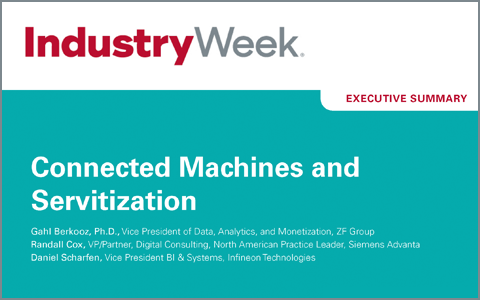EXECUTIVE SUMMARY
Connected Machines and Servitization
Connected Machines and Servitization
Across industries, legacy products without digital features are losing out in the marketplace. In response, manufacturers are developing connected product solutions that provide proactive predictive maintenance, production optimization services, and “outcomes-as-a-service.” Successful servitization initiatives depend on a holistic approach. This includes deeply understanding customers and the competition, as well as engaging all parts of the organization to support a comprehensive program.
Panelists
Context
Panelists
Context
Virtual Roundtable: Connected Machines and Servitization
Key Takeaways
– Gahl Berkooz, ZF Group
– Gahl Berkooz, ZF Group
Servitization Initiatives
Digital Services
Infineon builds digital services that enable customers to design systems faster and differentiate their businesses. Its power control division recently created the first service business unit within the company, offering two types of digital services: simulation-as-a-service and real-time analytics for predictive maintenance.
ZF Group started its digitalization journey about four years ago, resulting in the development of a digital venture accelerator that enables the company to rapidly spin up internal startups. ZF Group currently has four startups focused on advanced driver assistance systems (ADAS), field digitalization services, carbon dioxide and energy management, and digital bus fleet services.
Secure Data Transmission
Cloud Service
Machine Connectivity
ZF Group has found that its digital services enrich its customer relationships.
Thought Leadership
Marketplace for ADAS
Value Proposition
– Daniel Scharfen, Infineon Technologies
– Daniel Scharfen, Infineon Technologies
Implementation
Support & Sustainability
Once a digital service shows potential, it must be incorporated into traditional product roadmaps to ensure that it remains funded and is sustainable over time. Folding digital features into product roadmaps is a focus area for ZF Group in the coming year.
Getting Started
– Randy Cox, Siemens Advanta
– Randy Cox, Siemens Advanta
Additional Resources








